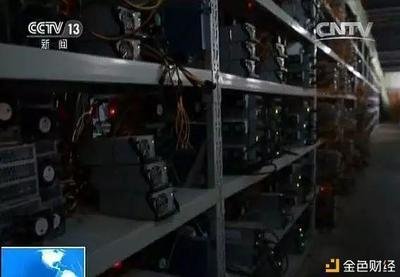In the rapidly evolving landscape of cryptocurrency, Dogecoin has emerged as more than just a meme-inspired token—it is now a staple in many miners’ portfolios. Alongside giants like Bitcoin and Ethereum, Dogecoin mining has garnered significant attention, prompting many enthusiasts and investors to seek efficient mining solutions. The rise of mining machine hosting services has transformed how individuals and enterprises approach decentralized mining, but navigating the often opaque world of mining hosting fees remains a complex challenge. Understanding these fees not only helps optimize profitability but also streamlines the operational workflow of running mining rigs, especially in a competitive environment.

Mining Dogecoin involves verifying transactions and adding them to the blockchain ledger, a process that requires powerful mining machines or rigs. These rigs, sometimes specialized ASIC miners or GPU-based rigs, demand robust energy inputs and consistent cooling mechanisms. This is where mining machine hosting providers come into play, offering spaces—often large-scale mining farms—equipped with the necessary infrastructure to house, power, and maintain these machines on behalf of miners. However, this convenience comes at a cost. Hosting fees vary drastically based on factors like electricity prices, maintenance services, geographical location, and security options. The fee structures can range from simple flat rates to complex dynamic pricing models that account for fluctuating electricity costs and market conditions.
Bitcoin mining fees have long set a benchmark in the industry. Historically, Bitcoin mining required massive capital investment in ASIC miners and access to cheap electricity, often making early hosted mining setups a lucrative proposition. Interestingly, Dogecoin mining, which operates on a slightly different Proof of Work algorithm—Scrypt rather than SHA-256—allows for a dual-mining setup with Litecoin, adding layers of strategic decisions for miners and hosting services alike. Ethereum, on the other hand, though shifting towards Proof of Stake, still commands significant interest in hosting services for those operating mining rigs focused on ETH or other ERC-20 tokens. Each cryptocurrency presents unique requirements, influencing the cost and complexity of hosting fees.

The real intricacy resides in the nuanced elements that influence hosting fees. For example, miners operating Dogecoin rigs must account for the hash rate their machines produce relative to electricity consumption, a critical factor that impacts their return on investment. Hosting providers often package electricity prices with other services like hardware maintenance, firmware updates, network stability assurance, and even insurance against outages or hardware failures. Such all-inclusive packages may inflate nominal fees but can ultimately increase net yield by reducing downtime and operational risks. Conversely, some miners may opt for barebones hosting, paying minimal fees while assuming more operational responsibility, which might be more suited for technologically savvy users with extensive mining experience.
Exchanges also play a pivotal role in the cryptocurrency ecosystem by providing liquidity and trading venues for mined coins like Dogecoin, Bitcoin, and Ethereum. Efficient mining directly affects exchange activity because miners frequently sell their mined coins to cover costs or realize profits, feeding into order books and market dynamics. Thus, miners, hosting services, and exchanges form a dynamic triad where each component influences the others. Hosting providers increasingly integrate value-added services such as automated payout options directly tied to major exchanges, thereby streamlining the entire process from mining to market liquidity.
The geopolitical and environmental considerations cannot be understated when discussing hosting fees. Many countries have varying electricity costs and regulatory landscapes that influence miner and hosting operation locales. For instance, some mining farms relocate to regions with abundant renewable energy sources to reduce costs and carbon footprints, indirectly influencing the fees charged. Additionally, fluctuations in cryptocurrency prices often send shockwaves through hosting fee structures; during bull markets, demand for hosting spikes, sometimes driving costs higher as providers capitalize on market exuberance. Conversely, bear markets may compress margins, forcing providers to recalibrate pricing models to attract long-term customers.
Exploring the diversity in hosting fee models, one might observe pay-as-you-go plans where users are billed purely on electricity usage and uptime, versus subscription models where fixed monthly fees grant miners predictable expenses. Advanced hosting solutions leverage real-time monitoring systems that allow users to track their rigs remotely, receive alerts on performance issues, and even adjust operational parameters. These technological integrations provide added value but also contribute to the overall cost. Moreover, some hosting services extend their offerings to include machine upgrades or resale options, enabling miners to stay competitive without the daunting overhead of outright hardware investments.
As the cryptocurrency mining sector continues to mature, the importance of transparent and competitive hosting fees will grow. For those engaged in Dogecoin mining, this means cultivating a comprehensive understanding of what hosting services offer and how fees are constructed. Savvy miners will weigh not only immediate financial outlays but also long-term operational efficiencies, reliability, and scalability potential. Given the volatile nature of cryptocurrencies and the constant evolution of mining technology, flexibility in hosting arrangements can be a critical advantage.
In conclusion, navigating Dogecoin mining hosting fees involves more than just comparing price tags. It demands a holistic approach that considers machine efficiency, electricity consumption, service quality, and strategic integration with broader cryptocurrency ecosystems including exchanges and mining farms. With informed decision-making and a keen eye on market trends, miners can optimize their hosting investments to unlock sustainable profitability in the exhilarating realm of digital currency mining.